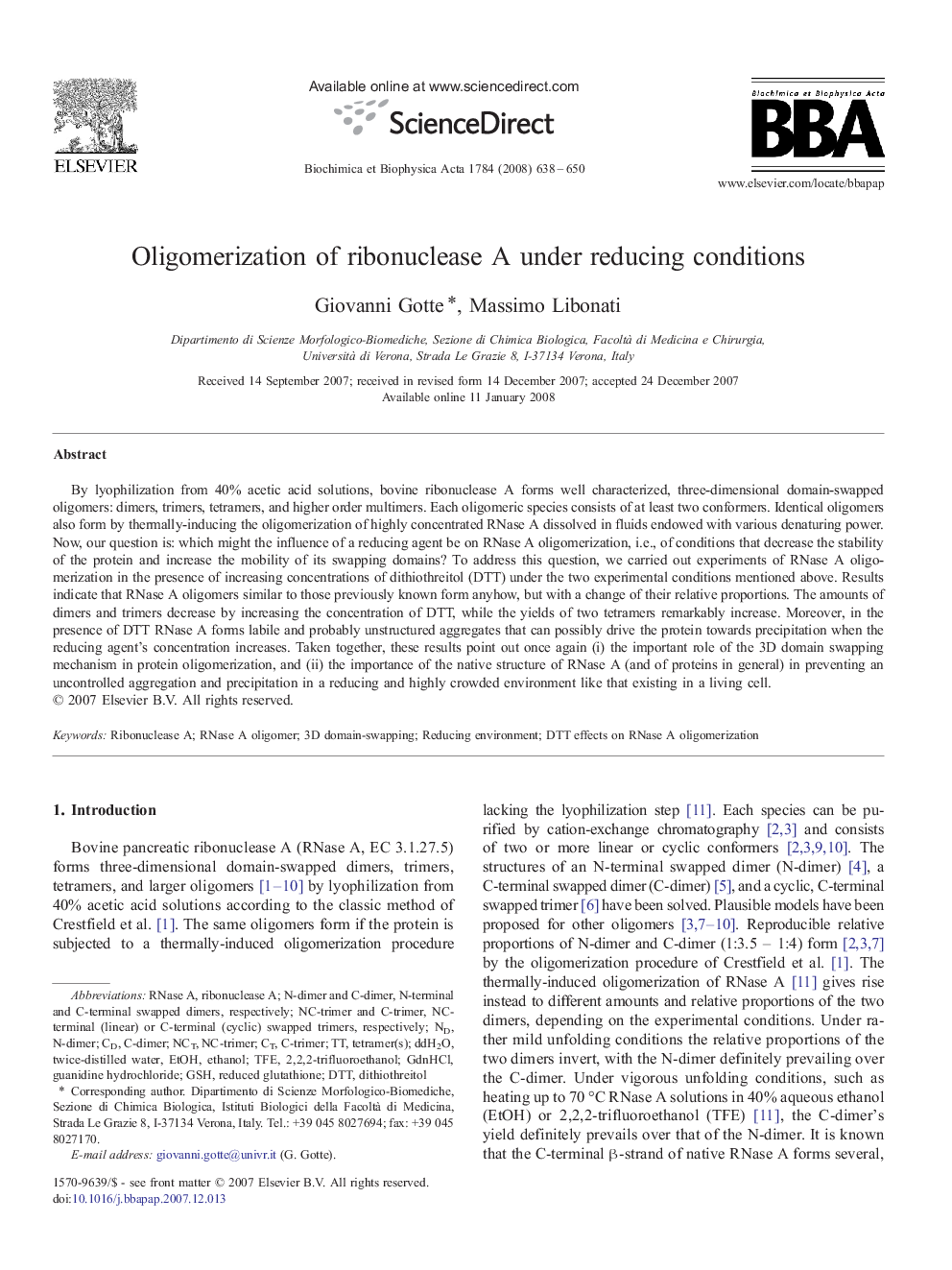| Article ID | Journal | Published Year | Pages | File Type |
|---|---|---|---|---|
| 1180585 | Biochimica et Biophysica Acta (BBA) - Proteins and Proteomics | 2008 | 13 Pages |
By lyophilization from 40% acetic acid solutions, bovine ribonuclease A forms well characterized, three-dimensional domain-swapped oligomers: dimers, trimers, tetramers, and higher order multimers. Each oligomeric species consists of at least two conformers. Identical oligomers also form by thermally-inducing the oligomerization of highly concentrated RNase A dissolved in fluids endowed with various denaturing power. Now, our question is: which might the influence of a reducing agent be on RNase A oligomerization, i.e., of conditions that decrease the stability of the protein and increase the mobility of its swapping domains? To address this question, we carried out experiments of RNase A oligomerization in the presence of increasing concentrations of dithiothreitol (DTT) under the two experimental conditions mentioned above. Results indicate that RNase A oligomers similar to those previously known form anyhow, but with a change of their relative proportions. The amounts of dimers and trimers decrease by increasing the concentration of DTT, while the yields of two tetramers remarkably increase. Moreover, in the presence of DTT RNase A forms labile and probably unstructured aggregates that can possibly drive the protein towards precipitation when the reducing agent's concentration increases. Taken together, these results point out once again (i) the important role of the 3D domain swapping mechanism in protein oligomerization, and (ii) the importance of the native structure of RNase A (and of proteins in general) in preventing an uncontrolled aggregation and precipitation in a reducing and highly crowded environment like that existing in a living cell.
